- About MAA
- Membership
- MAA Publications
- Periodicals
- Blogs
- MAA Book Series
- MAA Press (an imprint of the AMS)
- MAA Notes
- MAA Reviews
- Mathematical Communication
- Information for Libraries
- Author Resources
- Advertise with MAA
- Meetings
- Competitions
- Programs
- Communities
- MAA Sections
- SIGMAA
- MAA Connect
- Students
- MAA Awards
- Awards Booklets
- Writing Awards
- Teaching Awards
- Service Awards
- Research Awards
- Lecture Awards
- Putnam Competition Individual and Team Winners
- D. E. Shaw Group AMC 8 Awards & Certificates
- Maryam Mirzakhani AMC 10 A Awards & Certificates
- Two Sigma AMC 10 B Awards & Certificates
- Jane Street AMC 12 A Awards & Certificates
- Akamai AMC 12 B Awards & Certificates
- High School Teachers
- News
You are here
Who's That Mathematician? Paul R. Halmos Collection - Page 24
For more information about Paul R. Halmos (1916-2006) and about the Paul R. Halmos Photograph Collection, please see the introduction to this article on page 1. A new page featuring six photographs will be posted at the start of each week during 2012.
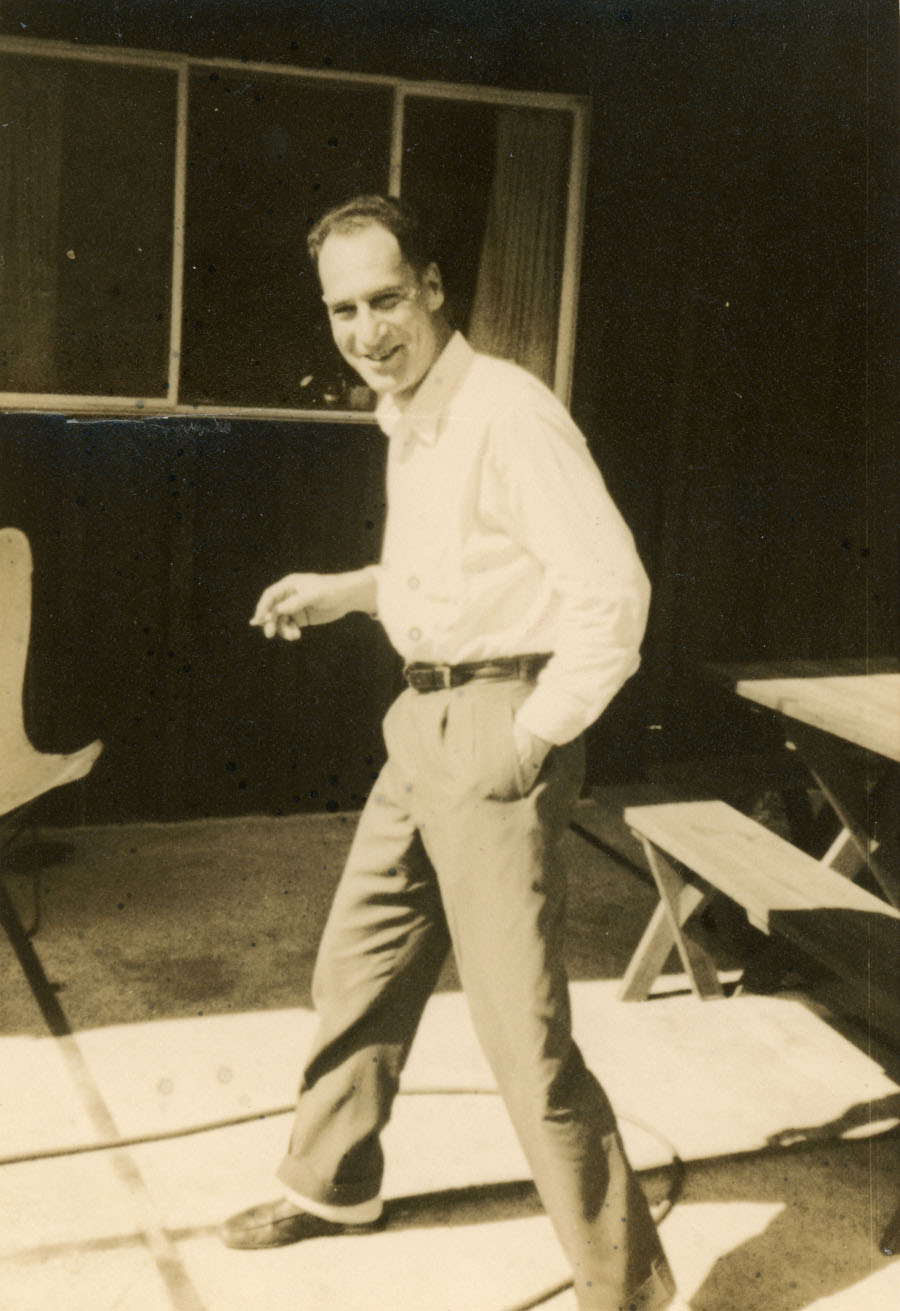
Halmos photographed algebraist Gerhard Hochschild (1915-2010) in 1959. Born in Berlin, Germany, Hochschild was educated at the University of Cape Town, South Africa, and at Princeton University in New Jersey, where he received his Ph.D. in 1941 with the dissertation “Semisimple algebras and generalized derivations,” written under Claude Chevalley. After service in the U.S. Army (1942-45) and short stints at Princeton and Harvard, he joined the faculty at the University of Illinois, Urbana-Champaign, in 1948. In 1958, he moved to the University of California, Berkeley, where he spent the rest of his career. His specialties were cohomology theory, algebraic groups, and Lie algebras. (Sources: In Memoriam: Gerhard Paul Hochschild, University of Illinois; In Memoriam: Gerhard Hochschild, UC Berkeley; Gerhard Hochschild (1915-2010), AMS Notices 58:8, September 2011)
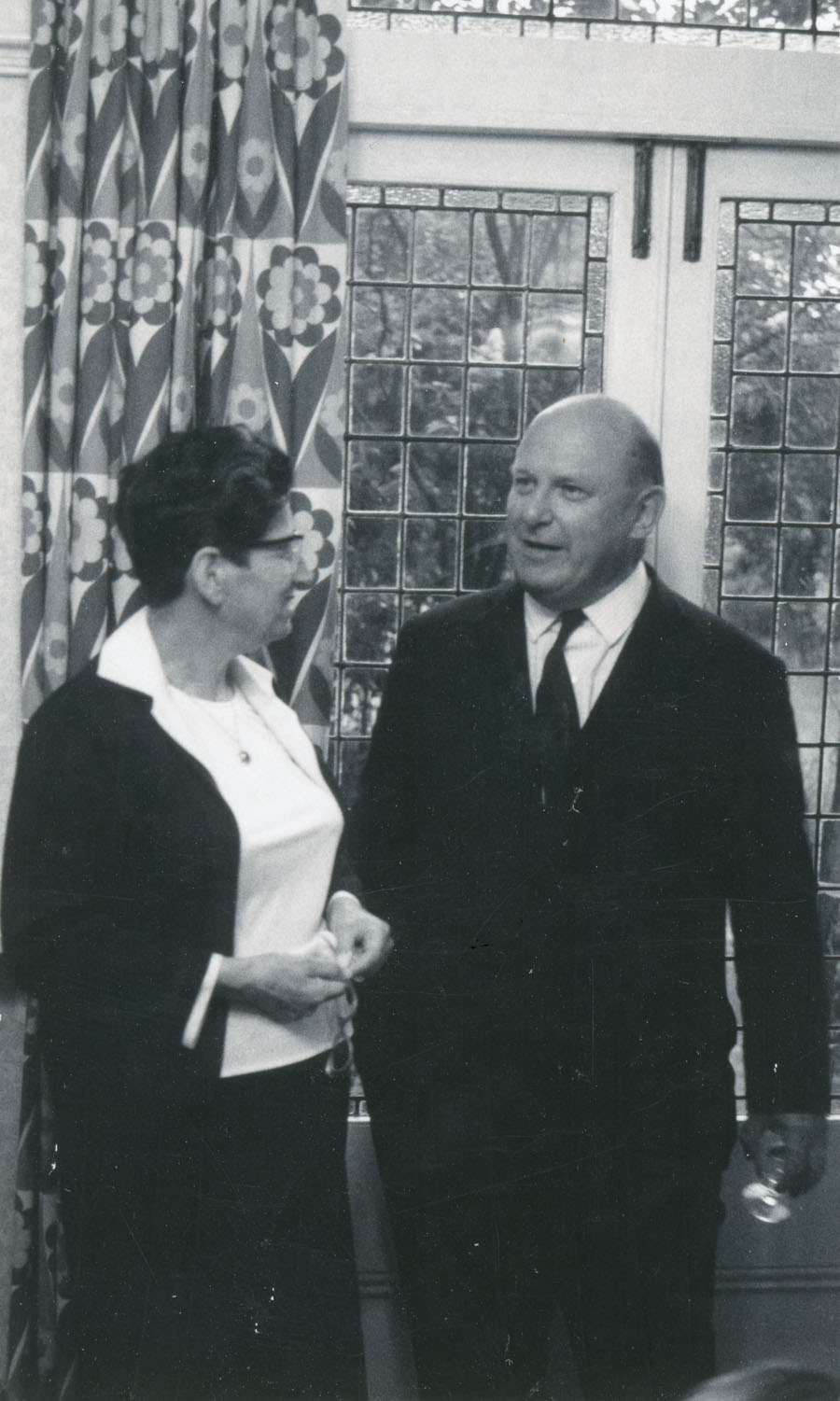
Halmos photographed Nora Arone Smithies and William Hodge on June 3, 1968, in Cambridge, England.
Nora Arone (d. 1987) met functional analyst Frank Smithies (1912-2002) in 1942, while both worked at the British Ministry of Supply during World War II, and they were married in 1945, when Frank Smithies returned to his academic post at Cambridge University after the war. He later became a mathematics historian best known for his work on Cauchy. (Source: MacTutor Archive)
William Hodge (1903-1975) was a well-known geometer, specializing in both algebraic and differential geometry. During the early 1930s, “he developed the relationship between geometry, analysis and topology and produced some of his best remembered work on the theory of harmonic integrals,” according to O’Connor and Robertson of the MacTutor Archive. Born in Edinburgh, Scotland, Hodge was educated at the universities of Edinburgh and Cambridge, spent five years on the faculty of Bristol University (1926-31) and one year visiting Solomon Lefschetz and Oscar Zariski in the U.S. (1931-32), and then, from 1932 onward, spent the rest of his career at Cambridge, where he was Lowndean Professor of Astronomy and Geometry from 1936 until his retirement in 1970. He was the Ph.D. advisor of 1966 Fields Medalist Michael Atiyah (Cambridge, 1955), whose photograph appears on page 2 of this collection. (Sources: MacTutor Archive, Mathematics Genealogy Project)
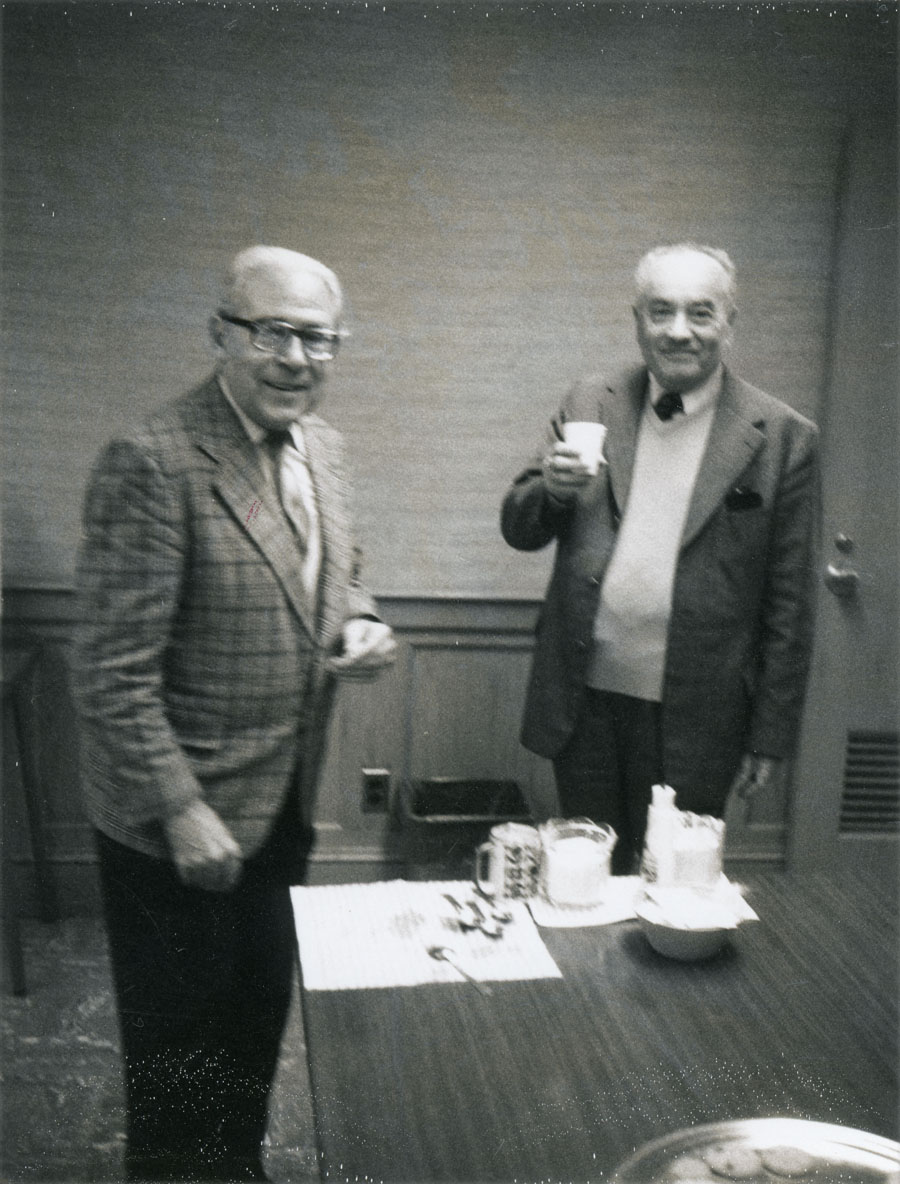
Halmos photographed Eberhard Hopf (1902-1983), left, and Menahem Schiffer (1911-1997) in November of 1978 at a colloquium at the University of Illinois at Chicago Circle.
Born in Salzburg, Austria, Eberhard Hopf received his Ph.D. in 1926 from the University of Berlin, Germany, under advisors Erhard Schmidt and Issai Schur. During his career, he worked in topology and ergodic theory, holding faculty positions mainly in the U.S., except for professorships at the universities of Leipzig and Munich, Germany, from 1936 to 1947. Hopf’s longest faculty appointment was at Indiana University from 1949 to 1972, when he retired, but he remained a research faculty member at Indiana until his death in 1983. Halmos was a faculty member at Indiana University from 1969 to 1985. (Source: MacTutor Archive)
Born in Berlin, Menahem Schiffer began his studies at the University of Berlin, but fled to Palestine in 1934. After initially studying physics with Erwin Schrödinger and then specializing in algebra with Schur in Berlin, he earned his Ph.D. from the Hebrew University of Jerusalem in 1938 with a dissertation on calculus of variations, written under Michael Fekete, in which he developed what became known as the “Schiffer variation.” Schiffer was on the mathematics faculty at Hebrew University from 1938 to 1946 and in 1950-51, at Harvard and Princeton in the U.S. from 1946 to 1950, and at Stanford University in Palo Alto, California, from 1951 onward. He was known for both excellent teaching and excellent research. (Source: MacTutor Archive)
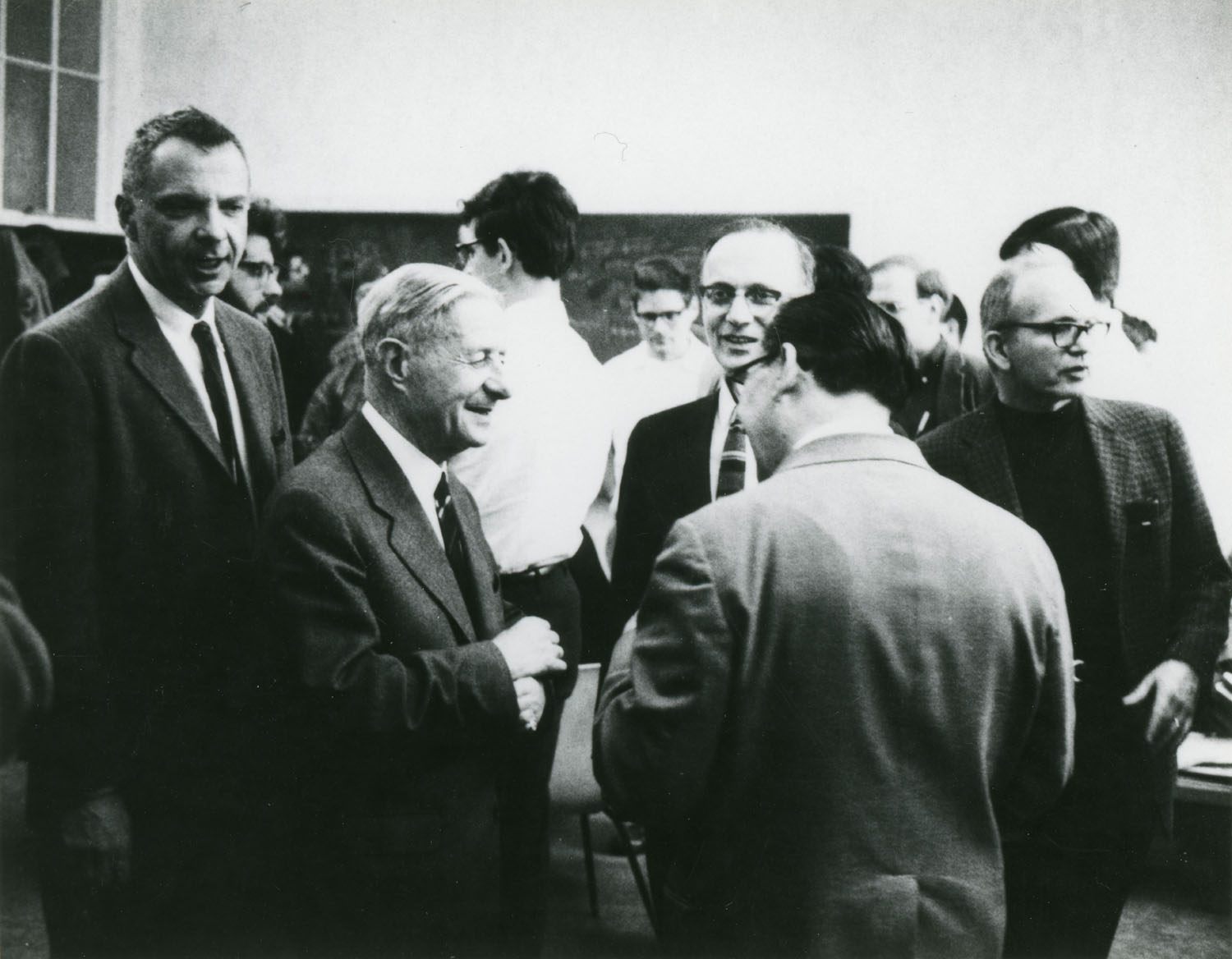
Algebraic topologist Heinz Hopf (1894-1971), second from left, was photographed by Halmos in 1968. Born near Breslau, Germany, Hopf studied at the universities of Breslau, Heidelberg, and Berlin. He earned his Ph.D. in 1925 from the University of Berlin with a dissertation on the topology of manifolds written under Erhard Schmidt. He then spent a year at the University of Göttingen studying with algebraist Emmy Noether and topologist Pavel Aleksandrov. He would collaborate with Aleksandrov for years to come, including the academic year 1927-28, which both spent at Princeton University. In 1931, Hopf accepted a chair in mathematics at Eidgenössische Technische Hochschule (ETH) in Zurich, Switzerland, where he remained for the rest of his career. His accomplishments in algebraic topology include introducing homology groups in 1928, the Hopf invariant in 1931, the Hopf algebra in 1939, and homological algebra in the early 1940s. (Source: MacTutor Archive)
Please help us identify the other people in the photograph above!
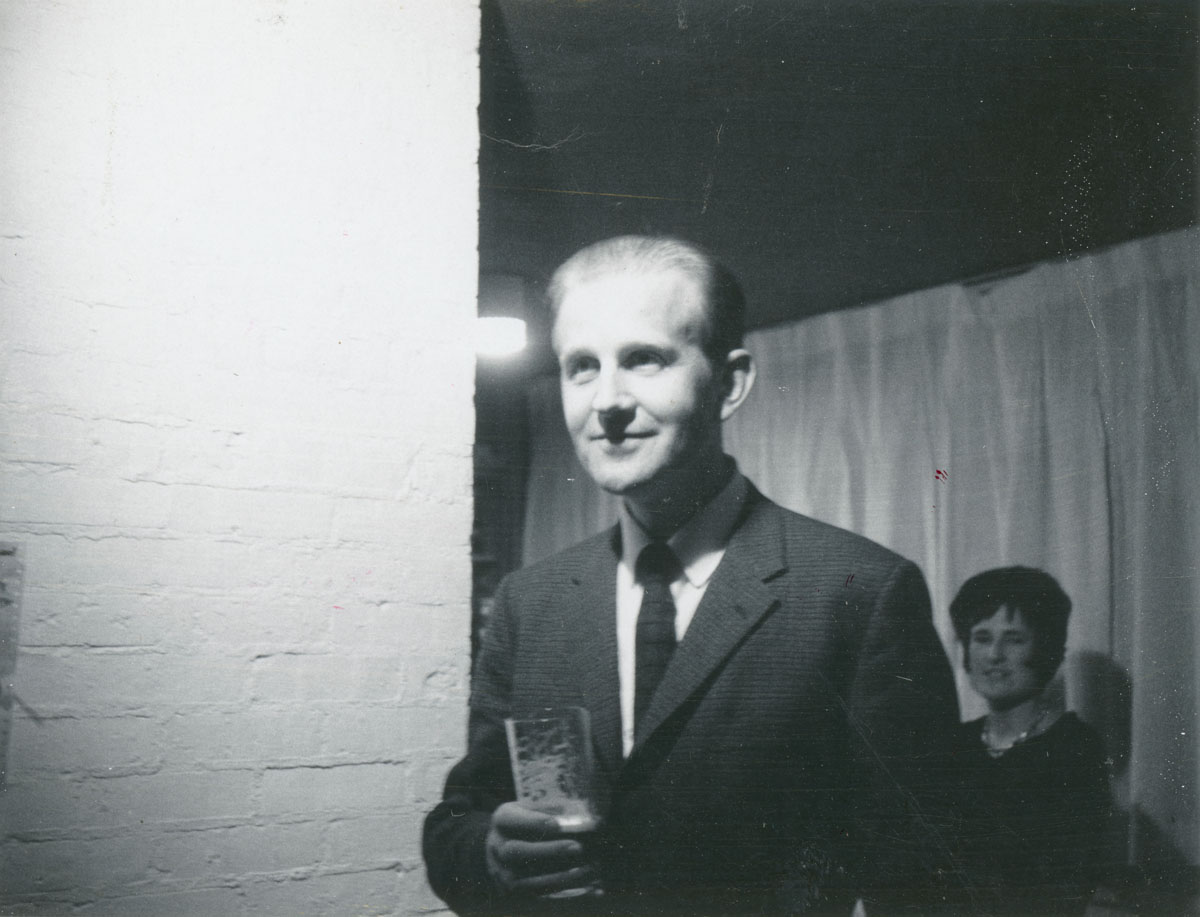
Halmos photographed Lars Hörmander on April 27, 1966, in Princeton, New Jersey. Hörmander was a faculty member at the Institute for Advanced Study in Princeton from 1964 to 1968. After earning his Ph.D. at Lund University in Sweden in 1955, he visited several universities in the U.S., including the University of Chicago, where Halmos was a professor at the time. Hörmander’s Ph.D. thesis was on the theory of partial differential equations, written under Marcel Riesz and Lars Gårding (pictured on page 16 of this collection), and in 1962 he was awarded the Fields Medal for his work on linear (partial) differential operators. He was a professor at the University of Stockholm, Sweden, from 1957 to 1964 and has been at Lund University, where he is now emeritus, since 1968. (Source: MacTutor Archive; Mathematics Genealogy Project; Lund University, Mathematics, Faculty of Science)
Who is the woman in the photograph above?
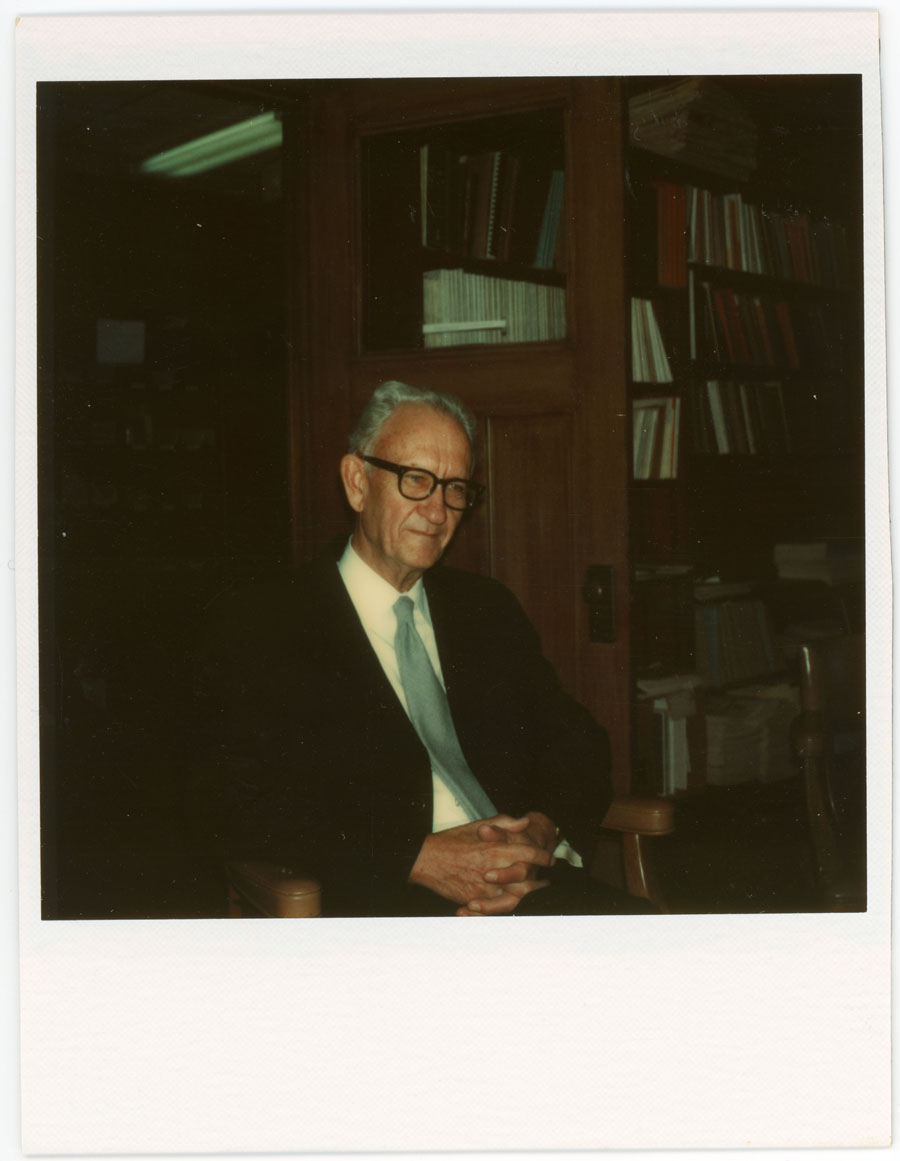
Alston Householder (1904-1993) was photographed on October 17, 1973, in Knoxville, Tennessee, where he was Professor of Mathematics at the University of Tennessee from 1969 to 1974. Householder earned his Ph.D. in 1937 from the University of Chicago with a dissertation in calculus of variations written under Gilbert Ames Bliss. He remained at Chicago for eight more years during which he focused his research on mathematical biology. From 1946 to 1969, Householder was a mathematician at the Oak Ridge National Laboratory in Tennessee, where his research focus was numerical analysis, especially its applications to linear algebra. (Sources: MacTutor Archive, Mathematics Genealogy Project)
For an introduction to this article and to the Paul R. Halmos Photograph Collection, please see page 1. Watch for a new page featuring six new photographs each week during 2012.
Regarding sources for this page: Information for which a source is not given either appeared on the reverse side of the photograph or was obtained from various sources during 2011-12 by archivist Carol Mead of the Archives of American Mathematics, Dolph Briscoe Center for American History, University of Texas, Austin.
Janet Beery (University of Redlands) and Carol Mead (Archives of American Mathematics, University of Texas, Austin), "Who's That Mathematician? Paul R. Halmos Collection - Page 24," Convergence (January 2012), DOI:10.4169/loci003801




